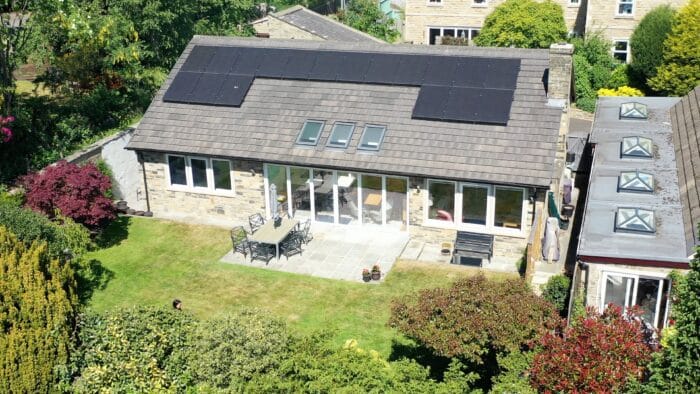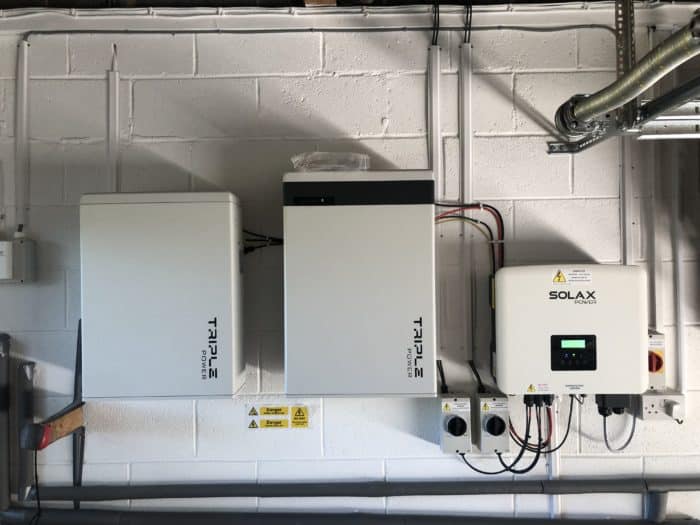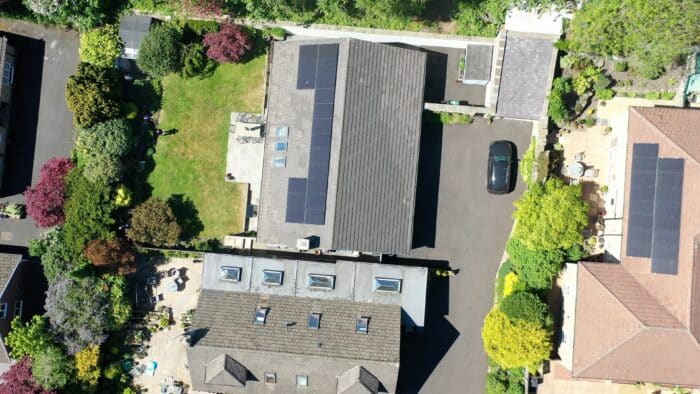What really happens once your panels are live, and why the first year matters most.

You’ve just gone solar. The panels are up, the app’s downloaded, and your meter’s ticking backwards. But now what?
A lot of homeowners wonder what the real day-to-day experience is like — not just during the install, but in the days, weeks, and months that follow.
So here’s a full walkthrough of what to expect from the moment your solar system goes live — all the way through your first year of clean, independent energy.
🔌 Week 1: Getting Switched On
Your system goes live the moment your inverter connects to the grid and starts converting solar energy into usable electricity.
In the first few days, you’ll likely notice:
✅ Your energy monitor or app showing live generation stats
✅ Daytime usage coming directly from your panels
✅ Surplus energy either charging your battery (if installed) or being sent to the grid
It’s a simple but powerful change: You’re now creating your own electricity — and every sunny hour saves you money.
📉 First Month: Your First (Smaller) Energy Bill
After a full month, you’ll start to see the real-world impact on your energy bills.
Most homes see an immediate drop of 50–70% in grid electricity usage during daylight hours.
If you’ve added a battery, this drop extends into the evening and overnight.
Here’s what influences your savings:
- The size of your solar system
- Your daily energy usage habits
- Whether you have battery storage
- Seasonality (longer days = more savings)
💡 Example: A typical 4kW system can shave around £80–£120 off a monthly bill during spring and summer.
🔋 Battery Performance: The Game-Changer
If you opted for battery storage, you’ll soon see why it’s worth the investment.
What your battery does:
- Charges with excess solar during the day
- Discharges in the evening when usage peaks
- Reduces your need to buy from the grid
- Can provide power during outages (if installed with a gateway)
You’ll also see it adapt to your usage habits. Some smart batteries even learn your patterns and optimise performance over time.
👉 Expect your self-consumption rate (how much of your solar you actually use) to rise significantly — up to 80–90% with battery storage.

🔁 Months 2–6: Real-Life Adjustments
As the seasons shift, so will your solar production.
☀️ In spring and summer, generation is high — often producing more than you need
🍂 In autumn and winter, days are shorter, so you may rely more on stored energy or the grid
What many homeowners love at this point:
- Watching their usage habits change naturally
- Running dishwashers and washing machines in the day
- Charging EVs with solar
- Using smart apps to track generation vs consumption
It’s not hard. In fact, most customers report that it becomes second nature within a few weeks.
🧾 Your First Annual Statement: Proof in Numbers
By the time you reach your 12-month mark, you’ll see the full picture — and it’s often better than expected.
What you’ll notice:
- Your annual energy usage from the grid has dropped significantly
- Your total bills are down — often by 50–70% or more
- If you export excess energy, you may receive Smart Export Guarantee (SEG) payments
- Battery and solar performance logs show long-term reliability
- Your EPC rating may have improved — increasing property value
🔢 Most homeowners see first-year savings between £800–£1,400 depending on system size and battery inclusion.
🌍 And Then It Just… Works
That’s the beauty of it.
Once your system is up and running, it requires very little input from you. Panels are low-maintenance, batteries are automatic, and your gateway (if you have one) keeps everything running smoothly — even during a power cut.
And best of all?
Your savings increase over time as energy prices rise — but your solar electricity stays free.

📈 Futureproofing from Day One
What starts as “just saving on bills” quickly becomes something more:
- Energy independence
- Protection from volatile prices
- Less reliance on the grid
- Confidence during outages
- A smaller carbon footprint
- A smarter, greener home
🛠️ What to Look Out for in Year One
🧼 Dust or shading on panels — clean them occasionally if needed
📲 Monitor your system via app for any unusual drops in performance
🔋 Battery discharge rates — track to make sure you’re maximising value
🧾 Export payments — make sure you’re registered with a SEG provider
You can always request a health check from your installer if anything feels off — but most systems run smoothly with minimal attention.
✅ Summary: Your First Year in Solar
| Month | What to Expect |
|---|---|
| Week 1 | Panels go live, app shows generation data |
| Month 1 | Lower energy bill, daytime savings |
| Month 2–3 | Adjustments to usage habits |
| Month 4–6 | Higher seasonal savings + battery gains |
| Month 12 | Annual statement shows real ROI |
📣 Thinking About Solar? Here’s What We’ll Help You Do
At Novus Energy, we design every system around:
- Your energy usage
- Your home layout
- Your long-term goals
We don’t just install panels — we build smart, complete systems that deliver results year after year.
📩 Ready to start your own journey from first bill to first year?
Fill out the contact form below and we’ll show you how solar could work for your home.